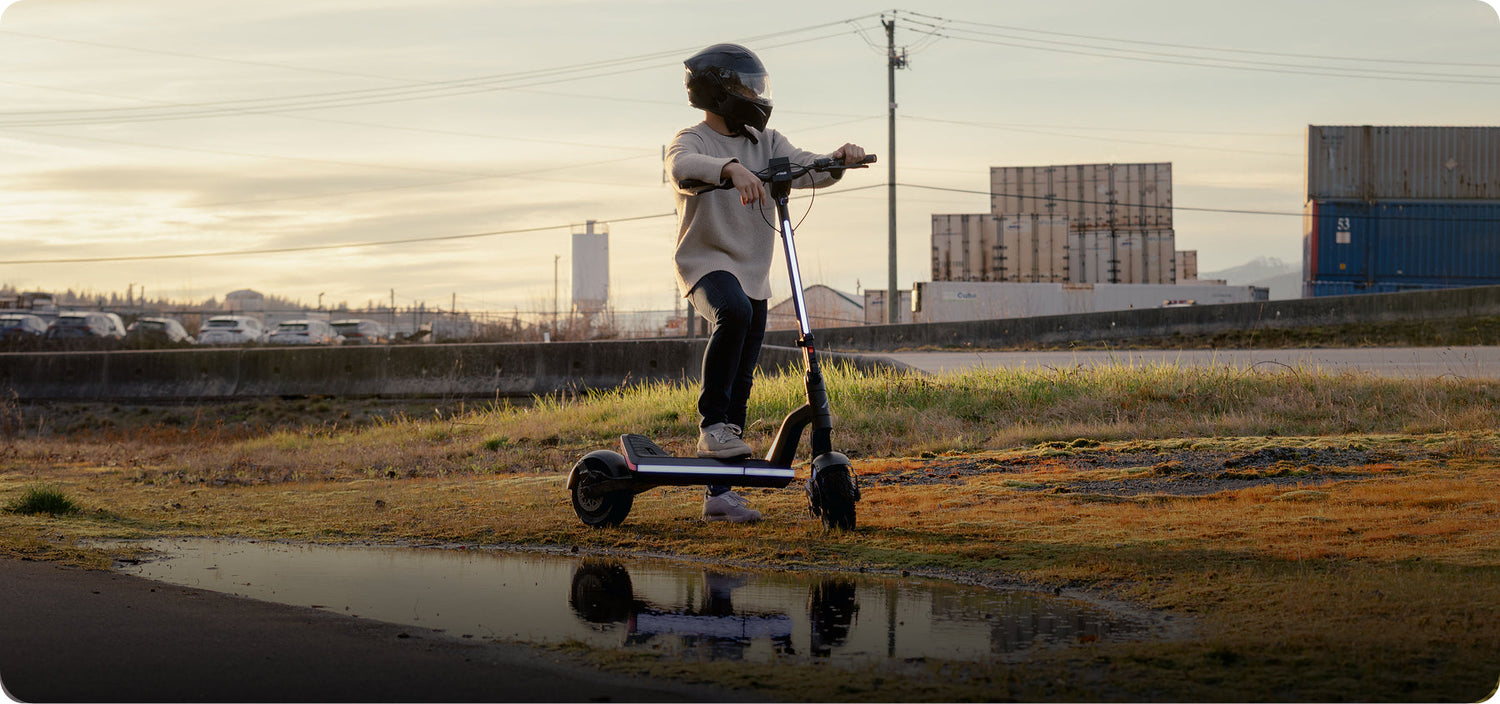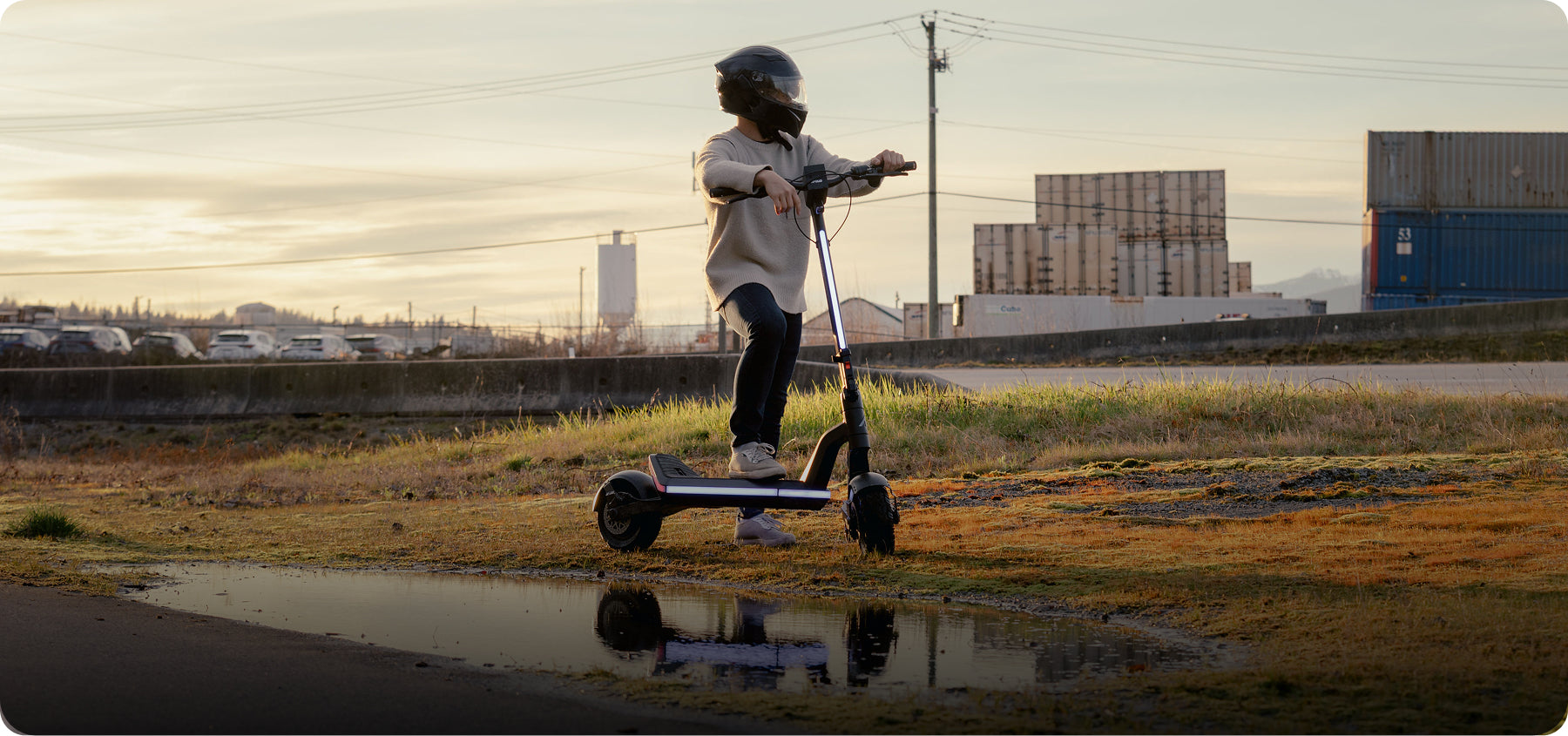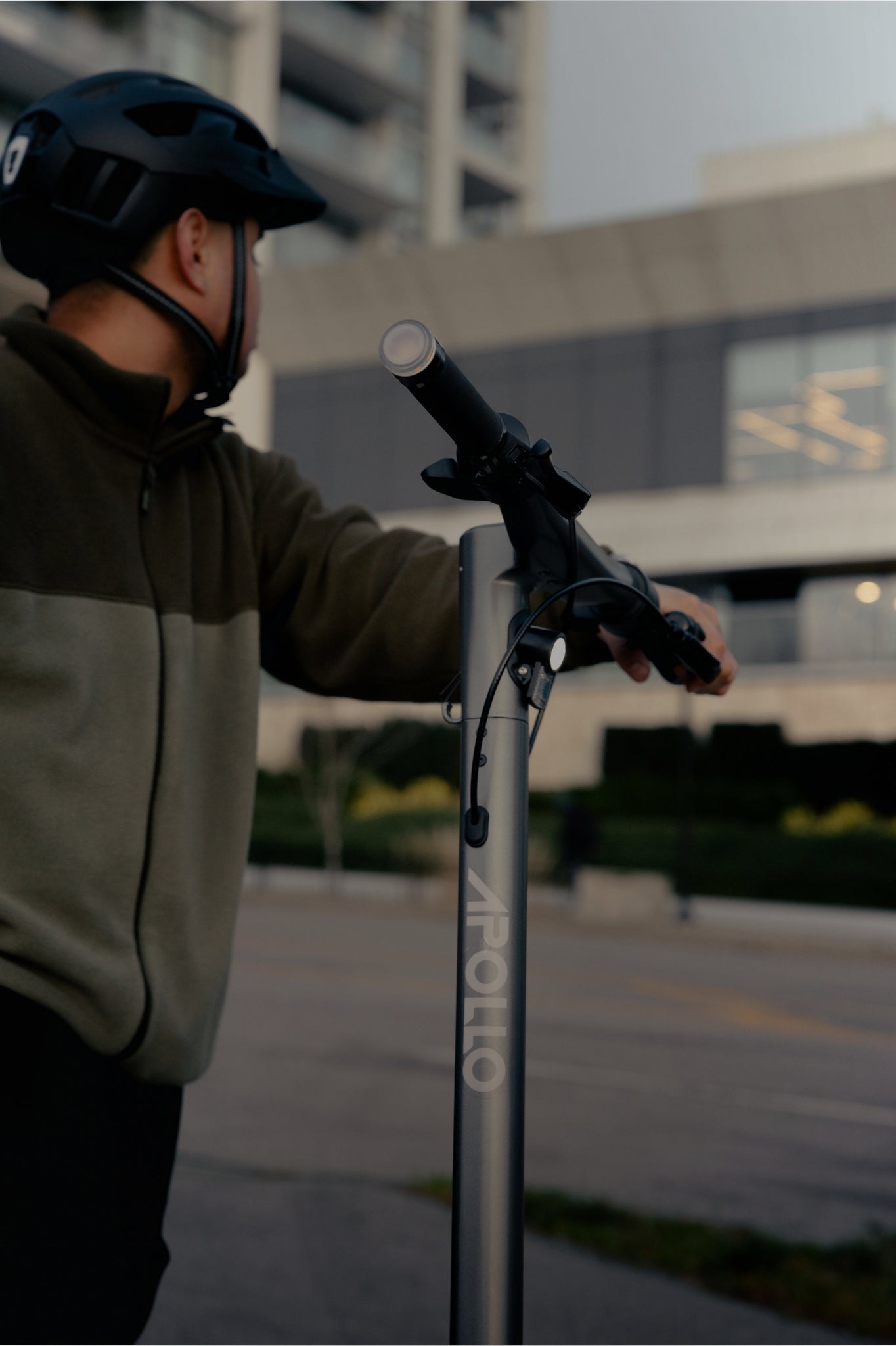What does motor power actually mean—and how does it affect your ride? Whether you're commuting, climbing hills, or chasing thrills, electric scooter motor power is one of the most important specs to understand before buying a scooter. Let’s break it down.
Why Motor Power Is One of the Most Important Specs
When shopping for electric scooters, you’ll quickly notice motor specs measured in watts (W). But what do these numbers really mean?
In simple terms, motor power determines how fast your scooter can accelerate, how well it climbs hills, and how smoothly it handles different terrains. It’s a direct reflection of the scooter’s performance, power output, and riding capability.

What Is Motor Power in an Electric Scooter?
Electric scooters use brushless DC motors—also known as hub motors, because they’re mounted inside the wheels. These motors convert electrical power into mechanical power to move you forward. The motor wattage (e.g., 500W, 1000W, or more) is the rating that tells you how powerful the motor is.
There are two types of power ratings to understand:
-
Continuous Power (or nominal power): The motor's sustained output under normal riding conditions.
-
Peak Power: The maximum output the motor can achieve for short bursts (like quick acceleration or climbing steep hills).
For example, a scooter with a 500W motor may have peak power of up to 800W for climbing or fast acceleration. When looking for a new scooter - make sure you're comparing apples to apples - there’s some companies that promote peak power (most of them), but there’s some that show nominal power. So next time you’re looking for your next scooter, be sure to check this out.
How Electric Scooter Motor Power Affects Your Ride
It might sound obvious, but motor power affects almost everything in your riding experience. So let’s break it down to make things crystal clear:
-
Top Speed: More powerful motors generally mean higher top speeds. Of course, there are other factors like rider weight, battery size, wind resistance, and terrain—but when all else is equal, motor power is the key driver of how fast your scooter can go.
-
Acceleration: Want that smooth, quick boost when the light turns green? A higher motor wattage gives you better acceleration. Keep in mind, though, your battery capacity plays a supporting role here too—without enough juice, that power doesn’t go far.
-
Hill Climbing Ability: If you live in a hilly area, this one’s crucial. A powerful motor helps maintain speed and momentum uphill. (Pro tip: You’ll want at least 500–600W of continuous power for moderate inclines, and 1,000W+ if you’re regularly tackling steep hills.)
-
Rider Weight Capacity: More motor power allows your scooter to handle heavier riders or extra gear without sacrificing performance.
-
Terrain Handling: Planning to ride on gravel, uneven pavement, or off-road trails? A strong motor helps you power through rough surfaces and keeps your ride steady.
That said, remember motor power isn’t everything—battery size, rider weight, terrain conditions, and even the controller all play a role in how your scooter performs. But when it comes to raw riding power? The motor sets the tone.
Choosing the Right Motor Power for Your Needs
So… How Much Scooter Motor Power Do You Actually Need? If you’re a seasoned rider or an electric scooter aficionado, chances are you already know exactly what you’re looking for—and honestly, you probably stopped reading two paragraphs ago. But if this is your first scooter, or you’re still figuring out what suits your riding style, let’s break it down. The best way to choose the right motor power is to think about your use case.
Light Commuting (Flat Terrain)
Just zipping around the neighbourhood or commuting short distances on mostly flat, dedicated bike lanes? You’re not chasing speed or insane acceleration, and you probably weigh on the lighter side. In that case, a commuting electric scooter with a 350W–500W motor should be more than enough. It’ll get the job done efficiently and reliably.
Urban Commuting with Moderate Hills
Riding through the city with the occasional incline? You still want a manageable scooter—not a speed demon—but you need a bit more power to handle some hills without slowing down. A 500W–800W motor is a great fit for this type of terrain and usage—especially if you’re on the lighter-to-average side.
Longer Rides or Heavier Riders
If you’re planning longer rides, carrying heavier loads, or you simply want to feel confident in more variable conditions, you’ll need at least 800W–1000W of motor power. This will give you a smoother, more responsive ride without stressing the motor.
Performance & Off-Road Riding
This is where things get fun. If you're looking for thrill rides, faster acceleration, and off-road adventures, look for scooters with 1,000W+ motors. Bonus points for dual-motor setups offering 2,000W+ of combined power—you’ll feel the difference in every turn, climb, and straightaway.
Your riding style and typical terrain are the two biggest factors in choosing the right electric scooter motor power.
And one more thing: the power levels above are based on single motor scooters. If you’re comparing single vs. dual motor scooters, there’s a huge difference in both feel and performance. We highly recommend you check out our full breakdown: Advantages of a Dual Motor electric scooter
Peak Power vs. Continuous Power Ratings
Not all scooters measure motor wattage the same way. That’s why it’s crucial to check whether the specs refer to peak power or continuous power. A scooter claiming 2000W might actually have 1000W continuous power per motor (in a dual-motor setup), with 2000W peak power bursts.
Understanding both ratings gives you a clearer picture of motor performance under real-world conditions.
Electric Scooter Motor Power and Legal Limits
Laws vary by country and region, but many areas cap motor power for public use:
-
In Canada and most of the US, the legal limit is around 500W–750W for scooters used on public roads.
-
In parts of Europe, the limit is 250W continuous power, though scooters may have higher peak power.
Always check your local regulations to ensure your scooter is street legal.
Top Apollo Scooters and Their Motor Power Ratings
Wondering which Apollo scooter matches your lifestyle and power needs? Whether you’re a casual commuter or an adrenaline-chaser, here’s a quick snapshot of our top models—organized by use case and motor performance.
Commuter Scooters
Built for the city grind, these models strike the perfect balance between power, portability, and practicality. They’re designed to get you where you need to go—quickly, smoothly, and without taking up your entire trunk.

-
Apollo Go – Dual 350W motors (700W peak power)
Don’t let the size fool you—this compact commuter packs a punch. Lightweight, agile, and versatile, the Go is ideal for daily rides around town. While it can handle light off-roading, it shines best on paved paths and bike lanes.
-
Apollo City – Dual 500W motors (1000W peak power)
For those who want a bit more oomph, the City delivers. With more torque and higher speeds, it’s ideal for mid- to longer-distance commuting. It’s commuter-ready with weekend-warrior energy—capable of fun adventures, but built for the road.
Performance Scooters
Looking for something that can keep up with your wild side? These scooters are built with high-performance motors, bigger batteries, wider tires, and advanced suspension systems—so you can ride longer, faster, and on tougher terrain.








